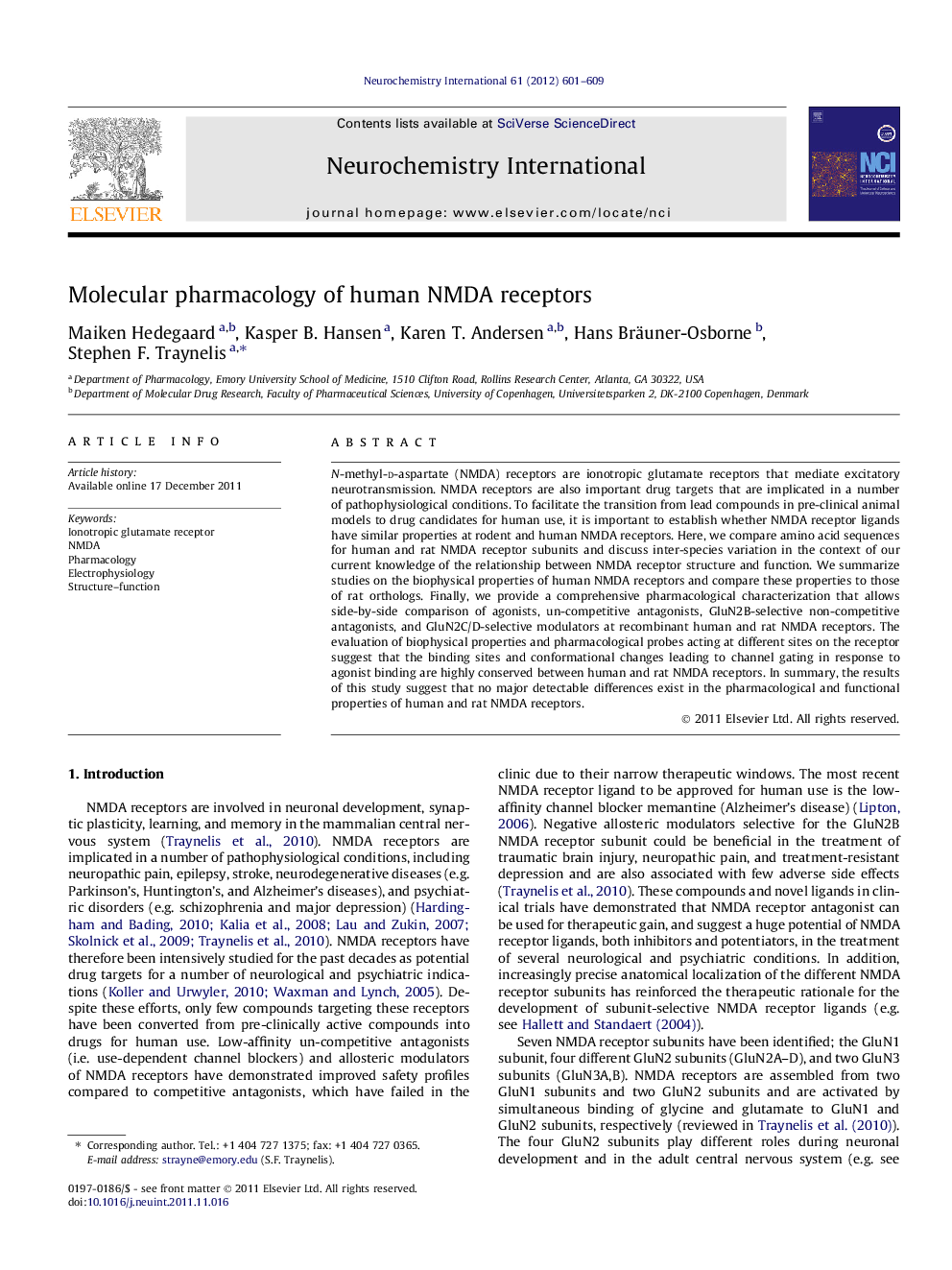| Article ID | Journal | Published Year | Pages | File Type |
|---|---|---|---|---|
| 2200861 | Neurochemistry International | 2012 | 9 Pages |
N-methyl-d-aspartate (NMDA) receptors are ionotropic glutamate receptors that mediate excitatory neurotransmission. NMDA receptors are also important drug targets that are implicated in a number of pathophysiological conditions. To facilitate the transition from lead compounds in pre-clinical animal models to drug candidates for human use, it is important to establish whether NMDA receptor ligands have similar properties at rodent and human NMDA receptors. Here, we compare amino acid sequences for human and rat NMDA receptor subunits and discuss inter-species variation in the context of our current knowledge of the relationship between NMDA receptor structure and function. We summarize studies on the biophysical properties of human NMDA receptors and compare these properties to those of rat orthologs. Finally, we provide a comprehensive pharmacological characterization that allows side-by-side comparison of agonists, un-competitive antagonists, GluN2B-selective non-competitive antagonists, and GluN2C/D-selective modulators at recombinant human and rat NMDA receptors. The evaluation of biophysical properties and pharmacological probes acting at different sites on the receptor suggest that the binding sites and conformational changes leading to channel gating in response to agonist binding are highly conserved between human and rat NMDA receptors. In summary, the results of this study suggest that no major detectable differences exist in the pharmacological and functional properties of human and rat NMDA receptors.
► Variations between human and rat subunits are mainly located in the ATD and CTD. ► Human and rat NMDA receptors have similar biophysical properties. ► Agonist binding and channel gating appear conserved between human and rat receptors. ► Non-competitive antagonists similarly inhibit human and rat NMDA receptors. ► The molecular pharmacology of NMDA receptors is conserved between human and rat.
